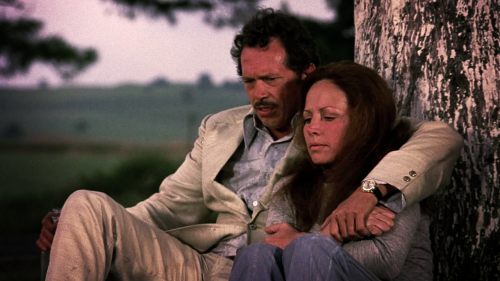The Badass Hall Of Fame: Sam Peckinpah
They called him Bloody Sam.
Sam Peckinpah was one of the greatest and most original directors in the history of Hollywood, and like the best geniuses, it took decades for him to finally get his due. He changed forever the way movies approached action, and he inserted both a dark edge and a vulnerable humanity into a genre that had been all too often generic and watered down. He created a stock company of some of the finest character actors of his time. And he was a total asshole, a huge pain in the ass, and a completely self-destructive drunk.
Peckinpah wanted to approach action scenes like explosions, to insert audiences directly into the chaos. He saw the way other filmmakers used slo-mo and wanted to take it to another level, wanted to use changing speeds and rapidly switching points of view to express the strange mixture of clarity and terror that comes in a moment of life or death decision-making. He would set up multiple cameras during his action sequences, each going at a different frame rate, and then disappear into editing with thousands upon thousands of feet of film to discover what he had created. He edited like no one else - in 1969 the average film had a couple of hundred cuts, while The Wild Bunch had almost 3000. He brought violence to a new level, wanting the audience to feel each bullet impact. He would have his FX team double load the squibs with blood, and he'd have bullets not just enter bodies but come exploding, messily, back out of them.
While some filmmakers would meticulously plan out every shot, every angle, every camera move, Sam’s style was to see where the day took him. One of the most iconic Peckinpah images - the Wild Bunch marching through town to confront Mapache - was something the director came up with on set just before a lunch break.
The Wild Bunch was Peckinpah’s most popular and lauded film, and in many ways it put him in a niche from which he could never escape. The Wild Bunch was incredibly violent for its time, and audiences and critics assumed this was what Peckinpah did - bullet ballets and blood poetry. There was more to Peckinpah, though, and when he tried to explore gentler topics in films like Junior Bonner and The Ballad of Cable Hogue, the response wasn’t the same. Cable Hogue was a hit, but not as rapturously received as The Wild Bunch. Junior Bonner all but sunk without a trace.
Sam Peckinpah was not an easy man to work with. Maniacally invested in his own vision, he pathologically butted heads with studio executives and money men. He had a habit of getting into fights, sometimes with stunt men, just to prove how tough he was. He was famously and extravagantly drunk on the job - later in his career he would claim he could not direct sober - and while he made hit films, he found himself increasingly marginalized because of his behavior and demeanor.
Along the way he made some spectacular classics. The Wild Bunch is one of the best Westerns ever. Bring Me The Head of Alfredo Garcia is a booze-soaked nightmare trip through Peckinpah’s own psyche. Straw Dogs is an examination of masculinity and force that is just as raw and difficult today as it was on release. Ride the High Country is a beautiful and elegiac look at male friendship and honor. Again and again Sam returned to the same themes of masculinity and honor and loyalty and the feeling of being born in the wrong time. His films were often set at the turn of the century, a time when the automobile was beginning to supplant the horse. He himself identified with the ethos of a time long gone.
Bring Me The Head of Alfredo Garcia was Peckinpah’s last great film. He made more pictures after that, movies that ranged from serviceable to sort of embarrassing, but it was all a decline. He died just a few months short of 60, the victim of years of drinking and whoring and general bad behavior.
In his best years Sam Peckinpah approached filmmaking with the lusty passion of a two-fisted swashbuckler. He built a legend for himself, leaving behind his well-to-do upper class roots and crafting the persona of a hard-drinking western outlaw. He was a monster and a genius, a man who explored the darkest aspects of life and, in some ways, was consumed by them.



